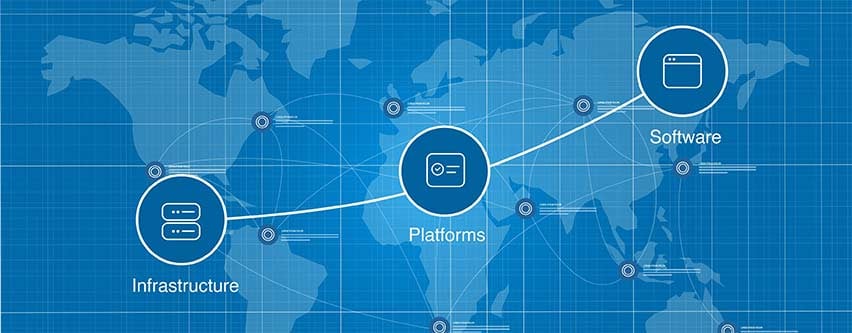The rapid evolution of technology, combined with an ever-increasing demand for innovation has necessitated the need for regular evaluations of the technology stack. Outdated or incompatible components can hinder performance, compromise security and impede the ability to scale.
A tech stack audit helps organisations understand the strengths and weaknesses of their current stack, enabling them to make informed decisions about improvements and upgrades.
Join us as we uncover the intricacies of tech stack audits, exploring their purpose, and benefits, as well as looking into the challenges you may face and what to take into consideration when conducting a successful audit.

What is a Tech Stack Audit?
A tech stack audit refers to the process of evaluating and assessing the technologies and tools used within an organisation's technology infrastructure. It provides a comprehensive understanding of the various components that make up the technology stack, including programming languages, frameworks, software applications, databases, and other related elements.
The main purpose is to gain insight into the current state of the technology stack and find areas for improvement. This involves a systematic examination of the stack's components, configurations, integration points, and overall compatibility.
During a tech stack audit, experts will typically review the existing codebase, documentation, and infrastructure architecture. They may also conduct interviews with key stakeholders to gather insights into the organisation's goals, requirements, and pain points. Additionally, specialised tools and methodologies may be used to collect data on the stack's performance metrics, such as response times, error rates, and resource utilisation.
The output of a tech stack audit is typically a detailed report or set of recommendations that outline the findings, risks, and improvement opportunities within the technology stack. These recommendations may include upgrading certain components, optimising configurations, improving integration between tools, or adopting new technologies that better align with the needs of the organisation.

Benefits of Tech Stack Audits
Conducting regular tech stack audits brings a multitude of benefits to organisations and their software applications. Let's explore the key benefits that come with performing these audits:

Improved performance: Tech stack audits help identify performance bottlenecks and inefficiencies within the technology stack. This leads to faster response times, better user experiences, and increased customer satisfaction. ![]()
Enhanced scalability: Through a tech stack audit, organisations can assess the scalability of their technology stack. Optimising the stack for scalability ensures that the business can handle increased user loads and data volumes, supporting business growth without compromising performance. ![]()
Enhanced security: Security is a paramount concern for organisations. Tech stack audits provide a comprehensive assessment of the security measures within the technology stack. This helps safeguard sensitive data, protect against cyber threats, and maintain compliance with industry standards and regulations. ![]()
Cost optimisation: Tech stack audits often shine a spotlight on where companies can reduce costs associated with their technology infrastructure. By identifying unused or underutilised resources, redundant tools or licences, and areas of inefficiency, organisations can save money by eliminating unnecessary expenses. Read this case study where a global organisation did just that and saved $20,000/annum after a tech stack audit. ![]()
Technology alignment: The technology landscape is constantly evolving, and organisations need to stay aligned with the latest advancements. By identifying outdated or incompatible technologies, organisations can make informed decisions about adopting new tools, frameworks, or libraries that better support their strategic goals. ![]()
Optimised resource utilisation: Tech stack audits provide insights into resource utilisation across the technology stack. This leads to improved cost efficiency, better resource utilisation and minimised waste for a lean operations model.![]()
Mergers and Acquisitions: Tech stack audits help organisations keep their specific use of technology well-documented and up to date. This becomes crucial during mergers and acquisitions, as it provides a firmer foundation for merging technologies. Clear technology documentation and well-motivated tech stacks often survive these processes, adding stability to potential deals and attracting investors.
By leveraging the benefits of tech stack audits, organisations can optimise performance, enhance security, reduce costs, and align their technology infrastructure with their business objectives. Regular audits ensure that the technology stack remains efficient, secure, and adaptable to meet the evolving needs of the organisation and its users.
Challenges and Considerations
While tech stack audits offer numerous benefits, organisations may encounter certain challenges during the audit process. It's important to consider these challenges and take proactive measures to overcome them.
Let's explore some common challenges and considerations associated with tech stack audits:
Complexity and size of the stack: Large and complex technology stacks can present challenges during the audit process. The more components, integrations, and dependencies involved, the more time-consuming and intricate the audit becomes.
To manage this challenge, break down the audit into smaller, manageable tasks, prioritise critical components, and consider leveraging specialised tools or external experts to streamline the process.
![]()
Limited Documentation: Inadequate or outdated documentation can hinder the audit process. Lack of documentation makes it difficult to understand the technology stack's intricacies and dependencies.
To address this challenge, collaborate with the development team to gather as much information as possible. Conduct interviews with key stakeholders and document findings to create a comprehensive overview of the technology stack.
![]()
Resource and time constraints: Tech stack audits require dedicated resources, including skilled professionals and sufficient time for thorough evaluation. However, organisations may face resource and time constraints due to ongoing projects or limited personnel.
Prioritise the audit process and allocate dedicated resources to ensure a comprehensive evaluation. Consider engaging external experts if additional expertise is required.
Legacy systems, dependencies and change management issues: Organisations with legacy systems may face challenges during the audit process, as employees tend to become attached to the technology they use day in and day out. Even if a better, more efficient option is suggested, change management issues can arise, making it difficult to migrate employees onto new software.
Legacy systems often have outdated components or dependencies that are no longer supported, posing compatibility and security risks. Moreover, employees may resist change due to familiarity with the existing system and fear of disruption to their daily workflows.
Organisations need to implement effective change management practices involving clear communication about the benefits of the proposed changes, addressing concerns and providing necessary training and support.
Third-party integrations: Tech stack audits should consider third-party integrations and their impact on the overall stack. Evaluate the compatibility, security, and performance aspects of these integrations. Ensure that the integrations comply with best practices, adhere to security standards, and are regularly updated to mitigate risks.

How often should you perform a tech stack audit?
A recommended time period for conducting regular tech stack audits is usually once a year. This timeframe allows organisations to stay proactive in assessing and optimising their technology infrastructure without being too burdensome on resources and time.
By conducting an annual tech stack audit, organisations can review their technology stack, identify areas for improvement, and implement necessary changes to optimise performance, enhance security, and align with evolving business objectives. This frequency strikes a great balance between ensuring ongoing assessment and minimising disruption to day-to-day business-critical operations.
Conclusion
When conducting tech stack audits, it's crucial to address these challenges effectively. By doing so, organisations can maximise the benefits of the audit process and ensure a successful outcome.
In conclusion, tech stack audits are an invaluable practice for organisations seeking to maximise the potential of their technology infrastructure. By investing in these audits, they can proactively identify areas for improvement, optimise their systems, reduce waste and stay at the forefront of technological advancements.
